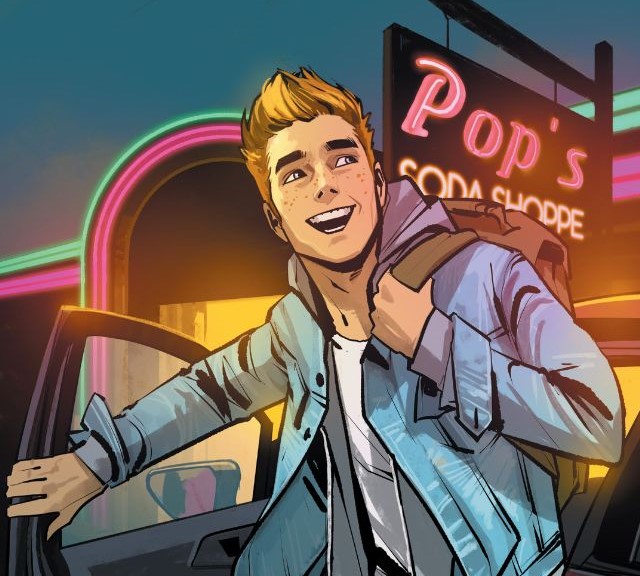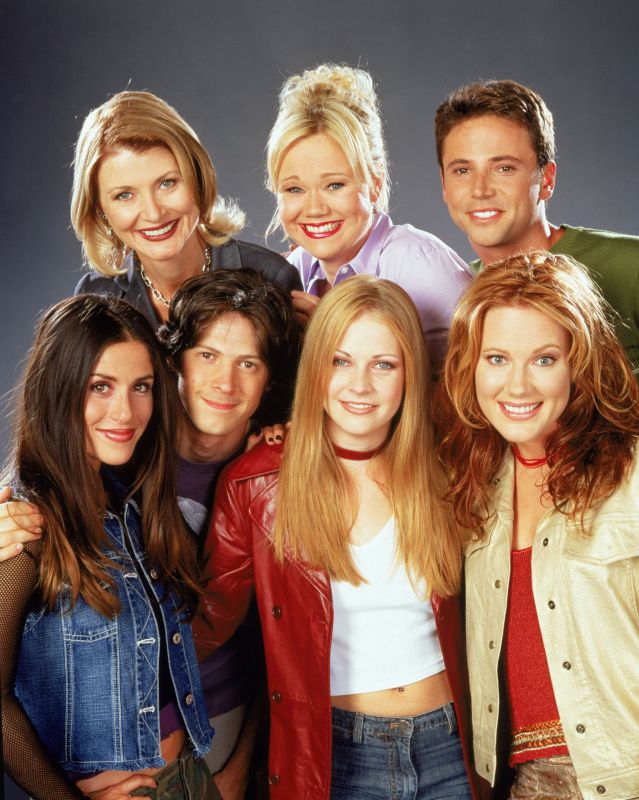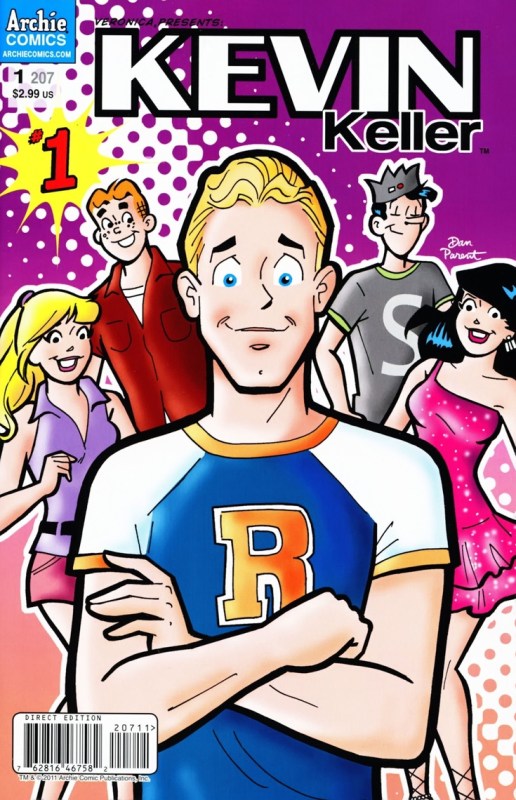My very first comics, along with comic strips in newspapers back in the 1980s, were Archie Comics. I have fond memories of going to the local newsstand, or bodega, or supermarket with my mom and always asking if she could buy me an Archie Digest. She would, reluctantly, knowing that I’d tear through it in about five minutes and soon have a hankering for another one.
Back then, I didn’t think of comics as an interest unto themselves. To me, reading was reading, and comics were just one more thing that I read. However, while I’d been to bookstores, libraries, and those stores I talked about above with my mother, I’d never been to a comics shop. To be honest, at that age I didn’t know that comics shops existed. There wasn’t a comics shop within walking distance of my apartment in Queens, NY, and no one in my life had ever brought up comics as A Thing. I mean, I knew that heroes like Superman and Batman came from comics. I wasn’t an idiot. But print comics just weren’t a part of my life.
As I got older, I stopped reading Archie Comics, because I’d apparently “aged out.” And so, even though boys my age got older and continued to read comics like Batman and X-Men, I somehow got the message that the comics that appealed to me weren’t “real comics.” I responded to the teen drama and the focus on relationships, romantic and platonic, that permeated those comics…and society told me that those interests were superficial and “fluffy.” And for children.
Because all feminine interests are, didn’t’cha know?
Now, of course I’m not saying that women and girls weren’t at all interested in superhero comics. One of my friends who loved X-Men in high school was female. However, in the 1980s and 1990s, for those of you too young to have grown up in those decades, the girls who loved mainstream comics were generally considered “tomboyish,” while the girlier-girls were off discovering manga. One thing’s for sure, non-conforming, subculture teenagers weren’t sitting around reading Archie Comics. At least, not openly.
However, teenage girls in the 1990s were definitely watching Melissa Joan Hart star as Sabrina in the eponymous Sabrina the Teenage Witch, a sitcom based on the Archie Comics character. This modernized version of the character and her supporting cast ran for seven seasons on ABC (and later on The WB). Of course, it wasn’t the first time Archie Comics characters were on the small screen. All the way back in the late 1960s, the animated The Archie Show from Filmation aired for one season. Footage from that show was later re-purposed in animated spin-offs, Sabrina the Teenage Witch and Josie and the Pussycats in the 1970s.
So, while mainstream superhero films were being marketed to men and boys (and I only got to see Tim Burton’s 1989 Batman film because my older brother took me), Archie Comics’ cast of characters reached young girls in their homes.
Archie Comics recently celebrated its 75th Anniversary, and despite their sweetness, have also been revolutionary precisely because they not only provided a bastion of female-friendliness in a comics climate that had become increasingly male-dominated, but they’ve always excelled at creating access to their properties across mediums. Their comics were available not only in comics shops, but in other stores and newsstands where girls were likelier to be. Their television shows were marketed in a girl-friendly way and more often than not focused on Riverdale’s female characters.
I reached out to Archie Comics’ Publisher/CEO Jon Goldwater for some insight into Archie Comics’ accessibility and inclusivity, and he says that this has always been a conscious choice on their part from the time his father, John L. Goldwater, co-founded the company:
“Archie Comics has always been about being inclusive rather than exclusive – across the board. That covers readership, distribution models, storytelling and characters. Unlike many of our competitors, Archie maintains a strong, ongoing presence on the newsstand – connecting our characters to a wide array of readers – while expanding our reach in the direct market, digital and the bookstore arena. The response – from pretty much everyone, to be honest, but also from girls and women – has been resoundingly positive. Fans want to see these characters pushed forward and shown in a new light that still manages to ring true to longtime fans. Archie and his friends are flexible – you can put them in a comic with zombies, KISS, Sharknado, you-name-it, and people know who the characters are. Archie as a brand should be seen as a forward-thinking, progressive and energetic company that isn’t afraid of taking risks or putting out relevant stories, which is a huge step forward from where the company was a decade ago.”
In addition to being one of the few comics that’s consistently been there for girls, Archie Comics has also become more inclusive of the LGBTQIA community.
Fun fact: Back in 2003, Roberto Aguirre-Sacasa, who’s now the Chief Creative Officer at Archie Comics, wrote a play called Archie’s Weird Fantasy, which was to be performed at Dad’s Garage Theater Company in Atlanta, but ended up getting a cease-and-desist letter from Archie Comics. Why? According to Creative Loafing, Dad’s Garage’s Artistic Director, Sean Daniels said, “Archie Comics thought if Archie was portrayed as being gay, that would dilute and tarnish his image. They said in the script, they counted seven copyright infringements that would each cost $150,000 in fines. We never expected to face a million-dollar bill if we put on the show.”
It’s amazing what a difference thirteen years makes! After then CEOs Richard Goldwater and Michael Silberkleit passed away (in 2007 and 2008 respectively), Silberkleit’s widow Nancy and Jon Goldwater became co-CEOs and the comics started seeing some huge changes. Kevin Keller, the first openly-gay character in Archie Comics history, debuted in Veronica #202 in September 2010. And in the new Jughead title currently being written by Chip Zdarsky, Jughead has been revealed to be canonically asexual.
Now, all we need is Betty and Veronica to realize that they’ve been wasting their time with Archie all along and start dating each other! (I’m only half-kidding)
In addition, Riverdale, both in comics and on the upcoming television show, is also more racially diverse than its ever been. In addition to Josie and the Pussycat‘s Valerie, and comics artist Chuck from the 1960s and 1970s, we now have several more black characters (Trevor, Toni), Latinx characters (Maria), and Asian characters (Sheila, Raj). On the upcoming show on The CW, Veronica is going to be Latina and Josie is going to be black.
And concurrently to all of this, Archie Comics continue to be available, not only in comic shops, but also online, at newsstands, at supermarkets, and at bookstores, and the Riverdale characters are returning to television, ensuring that the stories can be read and watched by all!
Thank you, Archie Comics, for being quietly, yet consistently, revolutionary, and for modernizing in all the right ways while holding onto all the traditional elements that make Riverdale so popular and wonderful in the first place. Archie Comics are for everyone, but they’re especially and increasingly good at being welcoming to marginalized comics readers. If you’re a comics fan of any age and you’re not checking out what’s popping in New Riverdale, go do that immediately.
Want more stories like this? Become a subscriber and support the site!
—The Mary Sue has a strict comment policy that forbids, but is not limited to, personal insults toward anyone, hate speech, and trolling.—
Follow The Mary Sue on Twitter, Facebook, Tumblr, Pinterest, & Google+.











Published: Jun 1, 2016 06:52 pm